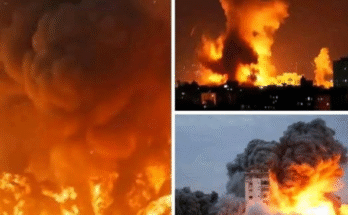The Sin of Cremation: A Historical and Religious Perspective
Death is one of the few certainties in life, yet the ways in which societies handle the deceased vary widely. Burial and cremation are two of the most common methods of body disposition, each with deep cultural, spiritual, and ethical implications. Among certain religious traditions, cremation has historically been viewed as controversial, sometimes even labeled “sinful.” This perception is rooted in beliefs about the sanctity of the body, the soul’s journey after death, and cultural interpretations of divine law. Understanding these perspectives requires exploring historical teachings, scriptural interpretations, and evolving societal attitudes toward death.
Cremation in Historical Context
Cremation is an ancient practice, with roots stretching back thousands of years. Archaeological evidence suggests that civilizations in India, Greece, and Rome practiced cremation for religious or practical reasons. In some cultures, cremation symbolized the release of the soul from the physical body, a transition that allowed the spirit to journey to the afterlife or reincarnation.
However, in other cultures, particularly those influenced by Judeo-Christian traditions, cremation was frowned upon. Historically, many Christians believed that the body was sacred because it was created by God and that it would be resurrected on the Last Day. Consequently, the destruction of the body through fire was viewed as a violation of divine intention—a desecration that could interfere with resurrection. This perspective gave rise to moral and theological debates that have persisted for centuries.
Theological Basis for Opposition
Within Christianity, opposition to cremation was rooted in several core beliefs:
-
The Sanctity of the Body: The body is considered a temple of the Holy Spirit and, therefore, sacred. Intentional destruction of the body through cremation was historically seen as disrespectful to God’s creation.
-
Resurrection of the Dead: Christian doctrine, particularly as articulated in the New Testament, emphasizes bodily resurrection. Passages such as 1 Corinthians 15 describe the dead being raised “in imperishable form.” Some theologians interpreted cremation as potentially undermining this resurrection, fearing that destroying the body could disrupt God’s plan.
-
Cultural Tradition: Burial had been the standard practice in Judeo-Christian societies for centuries, reinforced by scripture and tradition. Cremation, associated in some periods with pagan rituals or enemy cultures, was often viewed with suspicion or outright condemnation.
Catholic teaching historically regarded cremation as morally problematic. The 1917 Code of Canon Law discouraged it, while the 1983 Code allowed it only under specific conditions and with a clear respect for Christian beliefs about the body and resurrection. Many Protestant denominations, while initially resistant, have since adopted more permissive stances, though some continue to regard cremation as spiritually questionable.
Moral and Ethical Considerations
The perception of cremation as a “sin” is not universal. Religious opposition often centers on intention and respect rather than the act itself. Critics argue that cremation may reflect a lack of reverence for the deceased or an indifference to spiritual beliefs. Others maintain that, in certain circumstances, cremation is practical or necessary, such as in cases of epidemics, space limitations, or environmental concerns.
Ethically, some religious thinkers emphasize that the moral weight of cremation is not inherent in the act but in the surrounding attitude. Treating the deceased with honor, performing appropriate rites, and maintaining spiritual integrity can mitigate concerns about sin. In this view, cremation becomes problematic only if it reflects contempt for life, the body, or divine law.
Cultural Evolution and Acceptance
Over the past century, attitudes toward cremation have shifted in many parts of the world. Factors influencing this change include:
-
Urbanization and Space Constraints: In densely populated regions, burial plots are scarce or prohibitively expensive, making cremation a practical solution.
-
Environmental Concerns: Modern environmental awareness has prompted some to view cremation as a less resource-intensive alternative to traditional burials.
-
Changing Religious Views: Many Christian denominations, as well as Jewish and Muslim authorities, have relaxed prohibitions, emphasizing intention, ritual, and respect over strict adherence to traditional norms.
Despite these changes, cremation continues to evoke strong feelings in some communities, particularly among those who prioritize continuity with historical religious teachings. For these believers, cremation is more than a logistical choice—it is a moral decision with spiritual implications.
Psychological and Social Dimensions
Beliefs about the “sin of cremation” are not solely theological—they also have psychological and social dimensions. Funerary practices provide comfort, closure, and a sense of continuity for the living. Burial, with its symbolism of resting in the earth, may reinforce beliefs about resurrection or spiritual continuity. Cremation, in contrast, can challenge these expectations, evoking anxiety or moral concern among adherents of traditional doctrines.
Socially, cremation can affect family rituals, inheritance of burial plots, and communal mourning practices. In societies where the physical grave is central to remembrance, the absence of a body can disrupt cultural continuity, reinforcing the perception of moral transgression.
Balancing Faith and Practicality
For individuals navigating these issues today, the question of cremation versus burial often requires balancing faith, practicality, and personal values. Religious authorities increasingly emphasize discernment: the importance of intention, respect, and ceremony in honoring the deceased. In many cases, cremation is permitted as long as it aligns with broader moral and spiritual principles, such as conducting appropriate rites, preserving dignity, and expressing faith in life after death.
Some families choose a hybrid approach, such as cremation followed by the interment of ashes in consecrated ground, providing both practicality and spiritual continuity. Others adopt rituals that honor traditional beliefs while accommodating modern needs, such as memorial services, scattering of ashes in meaningful locations, or the inclusion of symbolic objects with the remains.
Conclusion
The perception of cremation as a “sin” is deeply rooted in historical, religious, and cultural contexts. For centuries, burial was the standard, and cremation was viewed as morally suspect or spiritually dangerous. Opposition was based on the sanctity of the body, beliefs in resurrection, and adherence to tradition.
Today, attitudes are more nuanced. While some religious authorities continue to caution against cremation, many accept it under conditions that respect faith, intention, and ritual. Cremation is increasingly seen as a practical, environmentally conscious, and spiritually permissible option, provided it is conducted with reverence and care.
Ultimately, whether cremation is considered sinful depends on one’s religious, cultural, and ethical framework. For believers, the key lies not merely in the act itself but in the attitude, intention, and respect demonstrated toward the deceased. By understanding the historical, theological, and social dimensions of cremation, individuals and families can make informed decisions that honor both their loved ones and their spiritual convictions.


